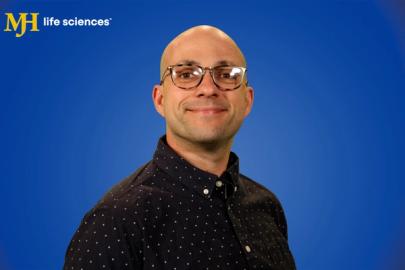- About Us
- Advertise / Support
- Editorial Board
- Contact Us
- CancerNetwork.com
- TargetedOnc.com
- OncLive.com
- OncNursingNews.com
- Terms & Conditions
- Privacy
- Do Not Sell My Information
- Washington My Health My Data
© 2025 MJH Life Sciences™ and CURE - Oncology & Cancer News for Patients & Caregivers. All rights reserved.
Simple Ways for Patients With Cancer to Start Exercising

A nationally-published, award-winning journalist, Alex Biese joined the CURE team as an assistant managing editor in April 2023. Prior to that, Alex's work was published in outlets including the Chicago Sun-Times, MTV.com, USA TODAY and the Press of Atlantic City. Alex is a member of NLGJA: The Association of LGBTQ+ Journalists, and also performs at the Jersey Shore with the acoustic jam band Somewhat Relative.
Exercise, as an expert explained to CURE, can have a significant positive impact on long-term outcomes for patients with cancer.
Exercise, as an expert explained to CURE, can have a significant positive impact on long-term outcomes for patients with cancer.
Following the publication of findings in The New England Journal of Medicine reinforcing this point, CURE spoke with Maureen McBeth, senior medical affairs liaison with ImpediMed and an expert in cancer rehabilitation and survivorship care, about the importance of exercise for patients as well as simple ways that they can safely start moving.
Can you explain in simple terms why exercise has such a powerful impact on long-term cancer outcomes?
The study was done with patients who had high-grade stage 2 or stage 3 colon cancer. Believe it or not, 20 years ago there was evidence suggesting that exercise could help, but what researchers really needed was a randomized controlled trial. That’s what makes this study so important — it actually divided patients into two groups. One group received standard care, which meant they were simply encouraged to be more physically active. The other group participated in a structured exercise program with instructors and classes, rather than just being handed a pamphlet.
The outcomes were impressive. Everyone expected to see some benefit, but we didn’t realize just how strong the effect would be. The benefit from exercise was comparable to giving patients an actual treatment, like chemotherapy. That’s how powerful it is — almost like a drug.
As for why exercise works this way, there are several hypotheses. One key idea involves something called myokines. Most people have heard of cytokines — especially during COVID, when we talked about cytokine storms. Cytokines are signaling molecules released in the body, and our muscles actually release a special kind called myokines.
These myokines act as messengers that travel throughout the body — to the brain, heart and other organs — helping to control inflammation and fatigue. This may be why exercise improves energy levels. It’s amazing to think that movement can trigger this kind of response almost immediately, not just over time.
If you’re feeling tired and think you should rest, that’s often the worst thing to do. Even light movement can stimulate the release of myokines that make you feel better — sometimes within minutes. That’s really the key takeaway: exercise provides both immediate and long-term benefits, and it doesn’t have to be intense — simple movement counts, too.
For patients who may not feel as physically fit or are nervous after treatment, what are some safe first steps they can take to begin exercising again?
A lot of people hear that word, “exercise,” and they think, “Oh my gosh. They want me to go to the gym and lift heavy weights, and they want me to get on a treadmill or on a stair climber. I don't like going to the gym,” or, “I don’t have the time, it’s too far away,” or “I don’t have the money.” People are scared, and they think that we’re trying to get them into something like CrossFit, and we’re not: we’re trying to get them off of the couch or out of the bed or out of the chair.
So I tell patients, start simple, and the first thing may be asking for help, whether that’s from a family member from your care team. Just be honest and say, “I really don’t know what to do.”
It can be as simple as just getting up out of a chair and seeing if you can do that 10 times in a row. That’s usually where I’d start with a patient. If you can’t, I really want you to call your care team and say, “I think I need help.” So that’s a very simple step, as is putting on walking shoes and going outside and walking, or another option if you’re living someplace where the weather may not be good, is every time you’re watching television, get up and move during the commercials. In a 30-minute TV show, you may actually get 10 minutes of exercise if you stand up and move every time.
I like to tell patients pop music is great because most songs are three minutes long — find your favorite song, put it on your phone and just get up and see if you can just do some dance that whole time. ... It can just be as simple as picking your feet up and down. Those are the first steps. When you start to do that every day, you’d be surprised. By the end of a month, most people can start to exercise or move for the required 30 minutes a day that we’d like you to get.
Transcript has been edited for clarity and conciseness.
For more news on cancer updates, research and education, don’t forget to subscribe to CURE®’s newsletters here.
Related Content:



